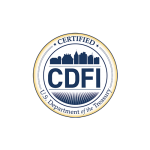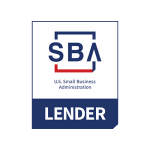
Should I Be Investing in Fractional Shares?
If you are new to investing in the stock market, fractional investing is a great way to get started. Playing the odds with the stock market can be expensive, with top-performing company shares costing hundreds to thousands a share.
Fractional investing lets you get started with investing sooner and build-up your portfolio. It helps to use all of the money you have available for investing, and allows you to diversify your portfolio easily.
In the past most stock trades were made in “round lots” of 100 shares. Brokers charged higher commission for “odd lot” trades, or trades that weren’t in multiples of 100 shares. Commission prices decreased when bargain brokers and the internet were introduced in the late 1990s. Brokers switched to flat-fee stock fees regardless of how many shares you purchased.
The need for financial education and financial literacy expanded as a result of technological advancements. New brokers began to appear that offered fractional investment. This opened the door to many new and first-time investors.
What are Fractional Shares?
A fractional share is simply a portion of a whole share of stock. Instead of owning one or more shares of the stock, you own a portion or a fraction of one. You can specify how much money you want to invest in a particular company (rather than how many shares you want to buy) and purchase a small portion of a share if your cash investment isn’t enough for a full one.
This is also known as dollar-based investing, where you can specify the amount of money you want to invest in a company and buy the number of shares that your budget allows. For example. If you are interested in a stock that has a share price of $100 but you only have $25, you can buy a quarter.
Lately fractional investing has become a popular way for young people and those just getting started investing in the stock market because they can invest small amounts (like $10) in the stocks or companies they love.

How to buy fractional shares
Before you can get started with fractional investing, you’ll have to first open a brokerage account with a company that allows fractional shares. Brokers have different rule regarding the minimum portion of a share that you can buy. Most of brokerage houses that offer fractional share also offer commission-free trading. It is essential that you find a broker that offers this option and not charge you transactions fees, otherwise the trades aren’t worth the effort.
Fortunately many online broker platforms offer fractional share purchases, including Fidelity, Charles Schwab, Betterment, Robinhood, Stockpile, and Motif. You can also opt for an index fund such as the S&P 500 ETF, which can offer more diversification than traditional stock investing. This is a fund that offers fractional shares in the top-performing companies on the S&P, allowing you to spread your money across some of the country’s top companies.
ETFs (exchange-traded funds) may also offer dividends quarterly, which are your share of the companies’ profits each quarter. If you’re interested in an ETF that tracks the S&P 500, Vanguard and Fidelity both offer options with fractional shares. ETFs are generally considered safer, more long-term investment strategies than investing strictly in individual stocks. This is because the risk is spread across different companies, minimizing your chance of loss, but also reducing the returns you could receive by choosing a winning stock.
Another way to invest is “round up” up your transactions and invest the loose change. It works like this. Suppose your morning Starbucks coffee cost $4.15 each morning. Why not round that up to $5.00 and have that extra 85 cents go into a brokerage account and buy some Starbucks stock?
Round up all of your bank or credit card transactions to the nearest dollar and save all those cents in a brokerage account. Once it gets to $25 (or whatever amount you chose) have that cash purchase fractional shares of your favorite companies.
Pros and cons of fractional investing:
The pros of fractional investing:
You can get started with very little cash and opening an account is fast and easy. Fractional Investing is using dollar cost averaging. This means that you will naturally buy fewer shares when the price is higher and more shares when the price is lower so you average price should be lower than if you just bought a fixed number of shares per month.
The stock market, on average, earns 8% a year so buying stocks is generally the preferred investment over a long term period. Investing your cash in a savings account generally earns 3%.
Earn returns sooner. Since fractional investing allows you to invest what you have, rather than waiting to buy a certain number of shares, you can begin investing your money sooner and potentially see returns faster.
Makes investing more achievable. For many, investing may seem out of reach due to high stock prices. However, fractional investing allows you to start where you are and begin pooling your money together over time to grow your portfolio.
The pros of fractional investing
You can get started with very little cash and opening an account is easy. The stock market, on average, earns 8% a year so buying stocks is generally the preferred investment over a long-term period. Investing your cash in a savings account generally only earns 3% or less.
Earn returns sooner. Since fractional investing allows you to invest what you have, rather than waiting to buy a certain number of shares, you can begin investing your money sooner and potentially see returns faster.
Makes investing more achievable. For many, investing may seem out of reach due to high stock prices. However, fractional investing allows you to start where you are and begin pooling your money together over time to grow your portfolio.
Can offer dividend reinvestment options. When you earn dividends through an index fund or ETF, you often have the option of reinvesting the money earned automatically. This is made even better with fractional shares, allowing you to re-invest all of the money earned, rather than just a portion of it.
The cons of fractional investing:
Understand how your broker is charging and beware of fees. If they charge $5 per month and you are only investing $100, then you are losing 5% of your money. Make sure you know how to sell your stocks and get your cash back. If there is an emergency and you need your money back, make sure you understand how much the broker charges to sell the shares and make sure you understand how many days it will take to get your money back into your bank account.
Only use a reputable broker. There are lots of startups offering fractional investing but for the most part these firms are not profitable and you have to be comfortable that your money is safe.
It might yield smaller returns. Of course, if you can’t afford to buy a whole share of stock, then even if it performs well, you’ll be limiting the returns you could have earned. While owning a fraction of a share only offers fractional returns, they still allow you to invest sooner, which can earn you more money than waiting to save up enough for a full share. You should weigh the benefits and drawbacks when considering which path is right for you.
Your shares may not be fully transferable. If you decide to transfer your investing services to a new broker or platform, you typically cannot transfer fractional shares — even if the new service allows fractional investing. It’s important to research your broker beforehand when investing with fractional shares to ensure you’re making a good long-term decision for your financial future.
Can place too much focus on short-term earnings. Playing the stock market is risky and while fractional investing allows you to dip your toe in the investing game, in general, it’s usually smarter to play a long-term game. Fractional shares of stocks make it easy for everyday people to buy, share, and trade stocks and could lose a lot of money long-term if they’re only focusing on short-term wins.

Other things to consider
Do fractional shares pay dividends?
Yes, if you buy a stock that pays dividends. You will receive a payment based on how many shares you own, just like any other investor. If you bought a stock that pays a $1 dividend for each share of stock, and you own half a share, you would receive $0.50.
When you buy a fraction of a share, you are treated the same as any other investor. You make the same percentage gains and get the same benefits of stock ownership. You also take on the same risk.
Can you sell fractional shares?
You can sell fractional shares just as you can sell any other shares of stocks you own. If you bought a half share through your broker and want to sell your stake, you can simply place a sell order with the same broker and cash out your holdings.
Do you have a wider pool of investments to choose from?
You can by fractional shares from any publicly traded company, including shares of companies that sell for thousands of dollars a share. This provides you as an investor, the opportunity to invest in companies that you believe have the best chance of performing in the long run. This gives you more control over your investment portfolio.
Conclusion
Building a diversified portfolio can help set you up for future success. If you find stock prices are preventing you from investing, then finding a platform that offers fractional investing could be worth considering.
If you are willing to research individual investments and work to build a diversified portfolio, fractional shares can actually outperform the market.
Every investor should weigh the benefits and risks before purchasing any assets, however many find fractional shares are a good addition to their portfolio.






